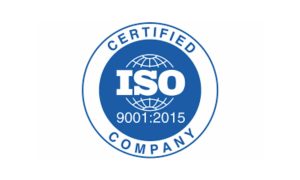ISO 9001:2015 is indeed a fundamental international standard that provides a framework for organizations to implement and maintain a Quality Management System (QMS). Here’s a more detailed overview of ISO 9001:2015 and its significance:
Purpose: The primary purpose of ISO 9001:2015 is to help organizations establish a systematic and structured approach to managing quality. It focuses on meeting customer requirements, improving processes, and enhancing overall customer satisfaction.
Scope: ISO 9001:2015 is applicable to organizations of all types and sizes, across various industries. It can be used by manufacturing, service, and non-profit organizations to establish and maintain a QMS that ensures consistent quality and customer-centric operations.
Customer-Centric: ISO 9001:2015 places a strong emphasis on understanding and meeting customer needs and expectations. Organizations are required to identify and monitor customer requirements and strive to exceed them whenever possible.
Process-Oriented: The standard adopts a process-oriented approach to quality management. Organizations are encouraged to identify and map their key processes, monitor their performance, and continually improve them to enhance efficiency and effectiveness.
Risk-Based Thinking: ISO 9001:2015 introduces the concept of risk-based thinking. Organizations are expected to identify and address risks and opportunities that can affect their ability to meet quality objectives. This approach helps organizations proactively manage potential issues.
Documentation and Records: The standard outlines requirements for documenting the QMS and maintaining records to demonstrate compliance. This documentation ensures consistency, transparency, and traceability of processes and activities.
Continuous Improvement: ISO 9001:2015 promotes a culture of continuous improvement. Organizations are encouraged to monitor and measure their processes, products, and customer satisfaction, and use this data to drive ongoing improvements.
Leadership and Commitment: The standard emphasizes the role of leadership in driving the QMS. Top management is expected to demonstrate a commitment to quality and actively engage in the QMS’s establishment and maintenance.
Auditing and Certification: To achieve ISO 9001:2015 certification, an organization undergoes a formal audit by an accredited certification body. Certification demonstrates the organization’s adherence to the standard’s requirements and can enhance its credibility in the eyes of customers and stakeholders.
Global Recognition: ISO 9001:2015 is recognized and accepted globally, making it easier for organizations to compete in international markets and attract customers who value quality and consistency.
In summary, ISO 9001:2015 is a versatile and widely adopted standard that provides a framework for organizations to establish a robust Quality Management System. It helps organizations enhance customer satisfaction, improve processes, manage risks, and drive continuous improvement. ISO 9001:2015 certification signals an organization’s commitment to quality and can open doors to new markets and customers by instilling confidence in the quality of its products or services.